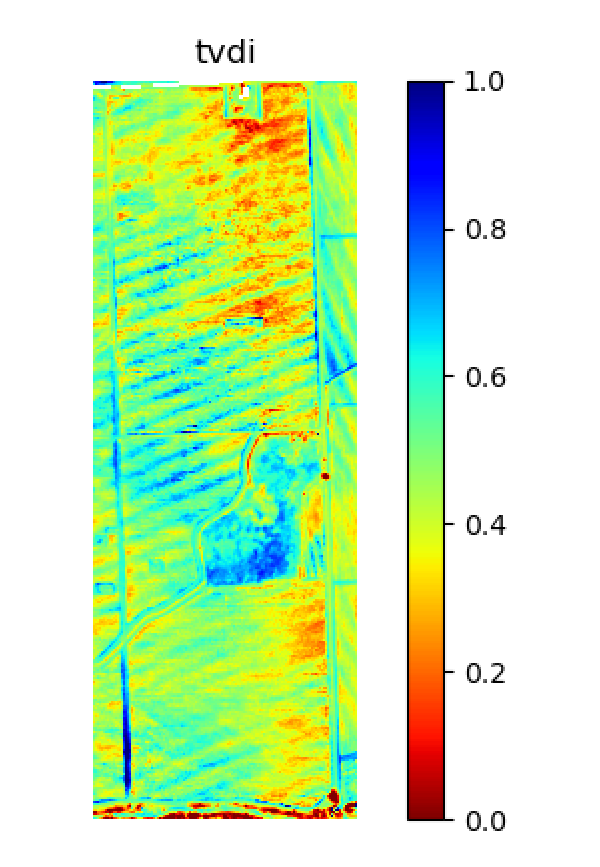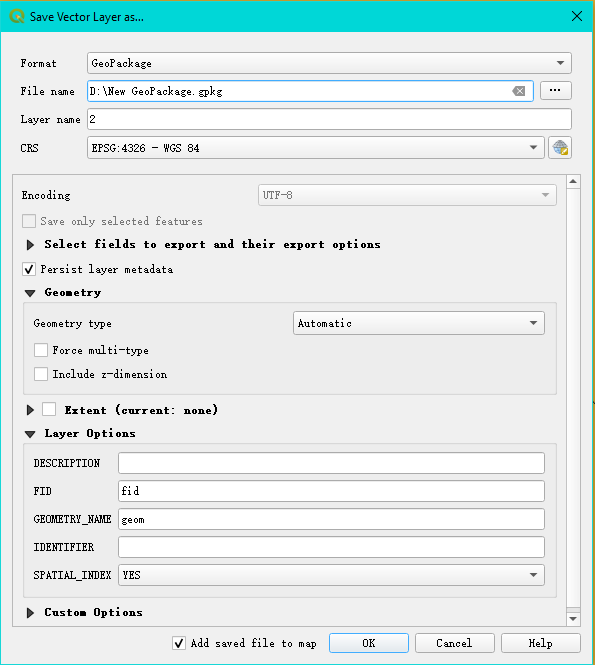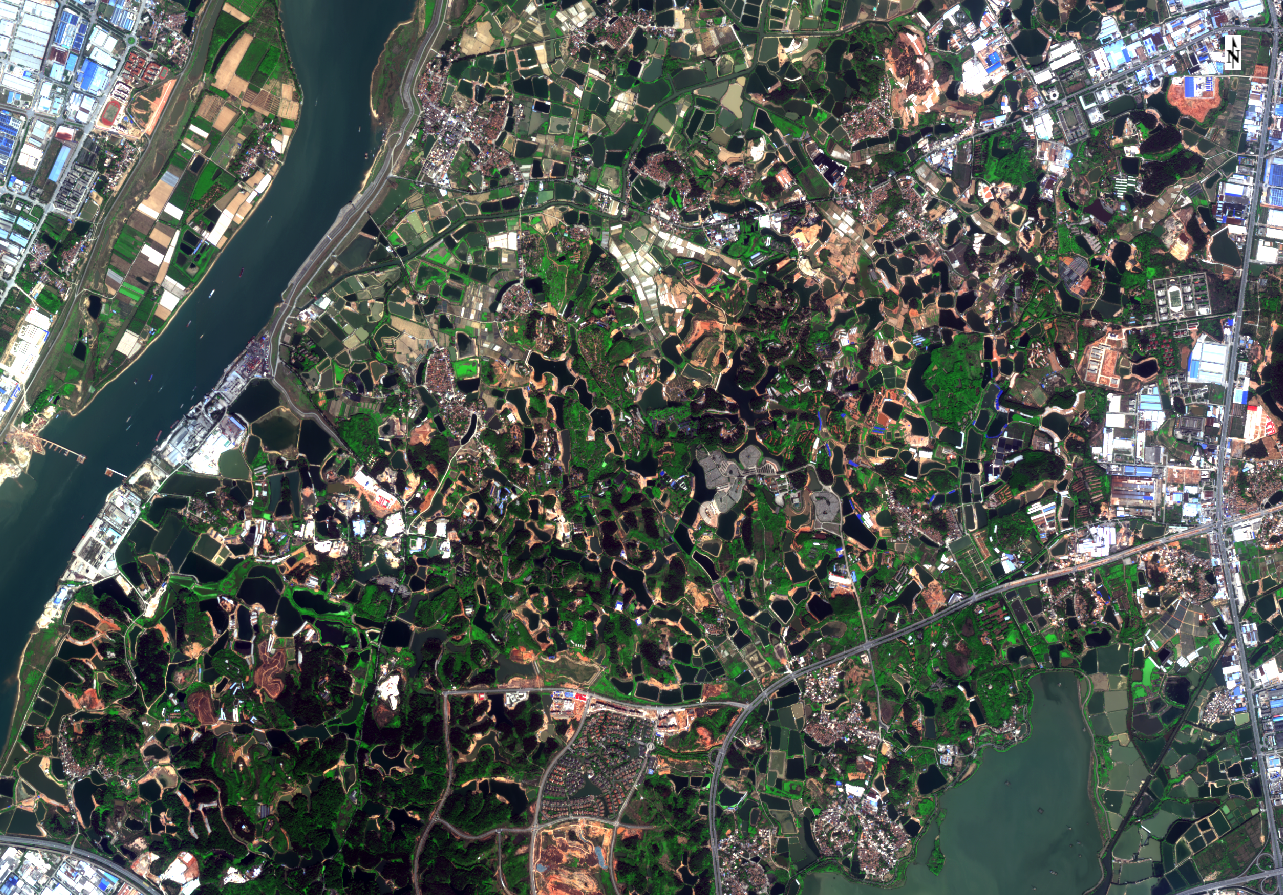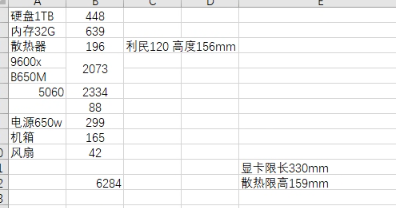利用Python计算和可视化温度植被干旱指数(TVDI)

利用Python计算和可视化温度植被干旱指数(TVDI)
ytkz在地理空间分析领域,温度植被干旱指数(TVDI)是一种广泛采用的遥感指标,用于评估区域干旱状态。它结合了地表温度(Land Surface Temperature, LST)和归一化植被指数(Normalized Difference Vegetation Index, NDVI)的信息,可以有效揭示土壤水分状况。本文将深入探讨如何使用Python中的GDAL、NumPy和Matplotlib库来处理地理空间数据,计算TVDI,并将其可视化。
准备工作
确保安装了以下库:
- GDAL:用于地理空间数据的操作和读取。
- NumPy:用于高效数组处理和数学运算。
- Matplotlib:用于数据可视化。
实现细节
数据准备与读取
首先,我们需要从TIFF文件中读取NDVI和LST数据。这可以通过GDAL的gdal.Open()函数完成,随后使用GetRasterBand().ReadAsArray()方法将波段数据转换为NumPy数组。
def get_data(file_ndvi, file_lst):
ndvi_tif = gdal.Open(file_ndvi, gdal.GA_ReadOnly)
lst_tif = gdal.Open(file_lst, gdal.GA_ReadOnly)
ndvi = ndvi_tif.GetRasterBand(1).ReadAsArray()
lst = lst_tif.GetRasterBand(1).ReadAsArray()
return ndvi, lst计算TVDI
TVDI的计算涉及以下几个关键步骤:
- 确定LST的湿边(最小值)和干边(最大值)。
- 使用线性回归拟合湿边和干边。
- 应用拟合的模型计算TVDI。
这里我们创建了一个向量化的NDVI序列,并通过遍历此序列来确定在每个NDVI值附近LST的范围。然后,我们对这些值进行线性拟合,最终计算出TVDI。
def compute_tvdi(ndvi, lst, MinPfit, MaxPfit):
Ts_max = b1 + (a1 * ndvi)
Ts_min = b2 + (a2 * ndvi)
TVDI = (lst - Ts_min) / (Ts_max - Ts_min)
return TVDI数据可视化与保存
为了更好地理解数据,我们使用Matplotlib绘制了NDVI与LST的散点图,以及拟合的湿边和干边线。此外,还生成了TVDI的热力图。
def plot_scatter(ndvi, lst, MiniList, MaxList, MinPfit, MaxPfit, scatter_file=None):
plt.plot(ndvi.ravel(), lst.ravel(), "+", color='dimgray', markersize=4)
plt.plot([0, 1], linhamax, color='r', markersize=8, label="Tsmax")
plt.plot([0, 1], linhamin, color='b', markersize=8, label="Tsmin")
plt.legend()
plt.show()
def show_tvdi(tvdi, fig_file=None):
plt.imshow(tvdi, cmap='jet_r', vmax=1, vmin=0)
plt.colorbar()
plt.show()最后,我们将计算得到的TVDI数据保存回一个新的TIFF文件,以便进一步的GIS分析或存档。
def save_tvdi(TVDI, gt, proj, dtype, file_out):
driver = gdal.GetDriverByName('GTiff')
dset_output = driver.Create(file_out, TVDI.shape[1], TVDI.shape[0], , gdal.GDT_Float32)
dset_output.SetGeoTransform(gt)
dset_output.SetProjection(proj)
dset_output.GetRasterBand(1).WriteArray(TVDI)
dset_output.FlushCache()
dset_output = None完整代码
#!/usr/bin/env python
# -*- coding: utf-8 -*-
# @Time : 2024/7/15
# @File : TVDI.py
'''
Main TVDI program
Adapted for Python by ytkz
'''
from osgeo import gdal
import numpy as np
import matplotlib.pyplot as plt
# 获取lst、ndvi数据
def get_data(file_ndvi, file_lst):
ndvi_tif = gdal.Open(file_ndvi, gdal.GA_ReadOnly)
lst_tif = gdal.Open(file_lst, gdal.GA_ReadOnly)
ndvi_band = ndvi_tif.GetRasterBand(1)
ndvi = ndvi_band.ReadAsArray()
lst_band = lst_tif.GetRasterBand(1)
lst = lst_band.ReadAsArray()
return ndvi, lst
# 获取投影等信息,用于保存TVDI结果
def get_info(file_ndvi):
ndvi_tif = gdal.Open(file_ndvi, gdal.GA_ReadOnly)
ndvi_band = ndvi_tif.GetRasterBand(1)
gt = ndvi_tif.GetGeoTransform()
proj = ndvi_tif.GetProjectionRef()
dtype = ndvi_band.DataType
return gt, proj, dtype
# 计算lst的最小值(湿边)和最大值(干边)
def get_min_max(ndvi, lst):
MiniList = []
MaxList = []
# 创建ndvi向量(0到1,间距为0.01)
ndvi_vector = np.round(np.arange(0.01, 1.01, 0.01), 2)
# 首先找到相同ndvi的lst值
for val in ndvi_vector:
lst_lst_val = []
row, col = np.where((ndvi >= val - 0.001) & (ndvi <= val + 0.001))
# 根据这些ndvi的位置,我们取温度值对应这些位置(行和列)
for i in range(len(row)):
if np.isfinite(lst[row[i], col[i]]):
lst_lst_val += [lst[row[i], col[i]]]
# 如果所需的ndvi有lst值,则计算最大值和最小值
if lst_lst_val != []:
lst_min_val = np.min(lst_lst_val)
lst_max_val = np.max(lst_lst_val)
else:
lst_min_val = np.nan
lst_max_val = np.nan
# 找到的值被添加到MiniList和MaxList列表中
MiniList += [lst_min_val]
MaxList += [lst_max_val]
return MiniList, MaxList
def fit(MiniList, MaxList):
ndvi_vector = np.round(np.arange(0.01, 1.01, 0.01), 2)
MiniList_fin = []
ndvi_fin = []
for i, val in enumerate(MiniList):
if np.isfinite(val):
MiniList_fin += [val]
ndvi_fin += [ndvi_vector[i]]
MinPfit = np.polyfit(ndvi_fin[14:89], MiniList_fin[14:89], 1)
MaxList_fin = []
ndvi_fin = []
for i, val in enumerate(MaxList):
if np.isfinite(val):
MaxList_fin += [val]
ndvi_fin += [ndvi_vector[i]]
MaxPfit = np.polyfit(ndvi_fin[14:89], MaxList_fin[14:89], 1)
return MinPfit, MaxPfit
def plot_scatter(ndvi, lst, MiniList, MaxList, MinPfit, MaxPfit, scatter_file=None):
ndvi_vector = np.round(np.arange(0.01, 1.01, 0.01), 2)
a1, b1 = MaxPfit
a2, b2 = MinPfit
linhamax = [b1 + (a1 * 0), b1 + (a1 * 1)]
linhamin = [b2 + (a2 * 0), b2 + (a2 * 1)]
plt.plot(ndvi.ravel(), lst.ravel(), "+", color='dimgray', markersize=4)
plt.plot(ndvi_vector[14:89], MiniList[14:89], '+', color='b')
plt.plot(ndvi_vector[14:89], MaxList[14:89], '+', color='r')
if a1 > 0:
plt.plot([0, 1], linhamax, color='r', markersize=8,
label=f"Tsmax = {'%.1f' % b1} + {'%.1f' % abs(a1)} * ndvi")
else:
plt.plot([0, 1], linhamax, color='r', markersize=8,
label=f"Tsmax = {'%.1f' % b1} - {'%.1f' % abs(a1)} * ndvi")
if a2 > 0:
plt.plot([0, 1], linhamin, color='b', markersize=8,
label=f"Tsmin = {'%.1f' % b2} + {'%.1f' % abs(a2)} * ndvi")
else:
plt.plot([0, 1], linhamin, color='b', markersize=8,
label=f"Tsmin = {'%.1f' % b2} - {'%.1f' % abs(a2)} * ndvi")
plt.legend(loc='upper right', fontsize=12)
plt.ylim(top=340, bottom=270)
plt.xlabel("ndvi")
plt.ylabel("lst (K)")
plt.title("ndvi vs lst Scatterplot")
if scatter_file is not None:
plt.savefig(scatter_file)
plt.show()
def show_tvdi(tvdi, fig_file=None):
plt.imshow(tvdi, cmap='jet_r', vmax=1, vmin=0)
plt.axis('off')
plt.colorbar()
plt.title("tvdi")
if fig_file is not None:
plt.savefig(fig_file)
plt.show()
def compute_tvdi(ndvi, lst, MinPfit, MaxPfit):
a1, b1 = MaxPfit
a2, b2 = MinPfit
Ts_max = b1 + (a1 * ndvi)
Ts_min = b2 + (a2 * ndvi)
TVDI = (lst - Ts_min) / (Ts_max - Ts_min)
return TVDI
def save_tvdi(TVDI, gt, proj, dtype, file_out):
fname_out = file_out
driver = gdal.GetDriverByName('GTiff')
data_type = dtype
dset_output = driver.Create(fname_out, TVDI.shape[1], TVDI.shape[0], 1, gdal.GDT_Float32)
dset_output.SetGeoTransform(gt)
dset_output.SetProjection(proj)
dset_output.GetRasterBand(1).WriteArray(TVDI)
dset_output.FlushCache()
dset_output = None
def main(ndvi_file, lst_file, tvdi_file, scatter_file=None, fig_file=None):
'''
Parameters
----------
ndvi_file : the file of ndvi
lst_file : the file of lst
tvdi_file : the file use to save tvdi
scatter_file : the file use to save scatter
fig_file : the file use to save the figure of tvdi
'''
# 获取ndvi和lst数据
ndvi, lst = get_data(ndvi_file, lst_file)
ndvi[ndvi < 0] = np.nan
lst[lst < 250] = np.nan
# 获取lst的最小值(湿边)和最大值(干边)
MiniList, MaxList = get_min_max(ndvi, lst)
# 计算tvdi,并保存
MinPfit, MaxPfit = fit(MiniList, MaxList)
tvdi = compute_tvdi(ndvi, lst, MinPfit, MaxPfit)
gt, proj, dtype = get_info(ndvi_file)
save_tvdi(tvdi, gt, proj, dtype, tvdi_file)
# 显示散点图
plot_scatter(ndvi, lst, MiniList, MaxList, MinPfit, MaxPfit, scatter_file)
# 展示tvdi结果
show_tvdi(tvdi, fig_file)
if __name__ == '__main__':
ndvi_file = r'NDVI_example.tif'
lst_file = r'LST_example.tif'
tvdi_file = r'TVDI.tif'
main(ndvi_file, lst_file, tvdi_file)结果展示
结论
通过上述Python脚本,我们能够高效地计算并可视化TVDI,从而为干旱监测和水资源管理提供科学依据。








